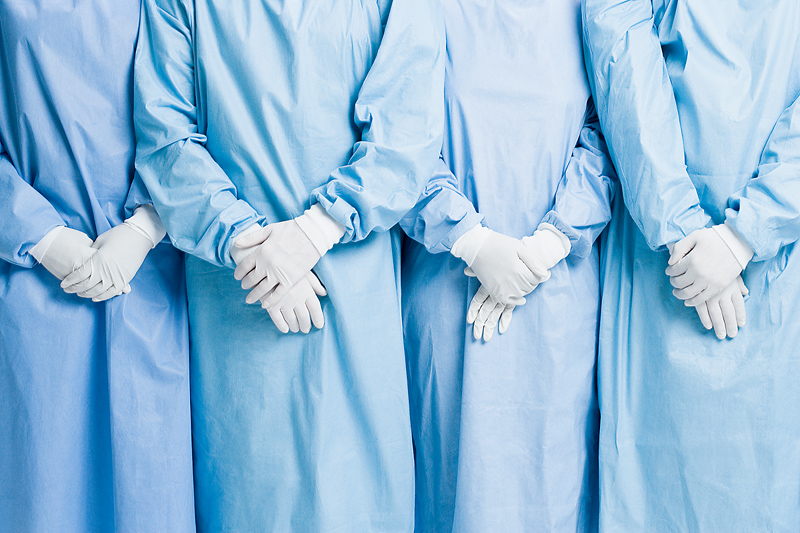

The way to increase the number of girls and boys who get the human papillomavirus (HPV) vaccine may be as simple as giving it as part of a routine bundle of vaccines, a new study suggests.
The HPV vaccine, which guards against the virus that causes most cervical cancers, is only being used in just over half of teen girls in the United States, lagging far behind other recommended vaccinations in this age group.
But, by lumping HPV in with other required vaccinations, a Denver clinic was able to dramatically increase vaccination rates to nearly 90 percent in boys and girls, researchers report.
“The program is simple and low cost, and something that can easily be rolled out at other institutions,” said lead researcher Dr. Anna-Lisa Farmar. She is an assistant professor of pediatrics at the University of Colorado in Aurora.
“It’s become a part of our general procedures to encourage vaccination at every visit, and use every visit as an opportunity to give vaccinations,” she said.
Doctors at the clinic see all vaccines given to 11-year-olds — including HPV — as standard, rather than singling out the HPV vaccine as optional or different from the others, Farmar explained. “As a result, parents feel more confident in giving these vaccines for their child,” she said.
Some parents are concerned that their children will become sexually active if they get the HPV vaccine, Farmar acknowledged.
“We let them know that the vaccine works much better when it’s given well before the onset of sexual activity and that studies have shown that giving a child their HPV vaccine doesn’t increase their likelihood of becoming sexually active,” she said.
“HPV should be viewed as one of the routine vaccines for adolescents. It’s the first vaccine that prevents a cancer,” she added.
One doctor said the approach makes sense.
“This is back to the future. It has not been common practice in primary care to have a discussion about would you like to get vaccinated,” said Dr. Michael Grosso, medical director and chief medical officer at Northwell Health’s Huntington Hospital in Huntington, N.Y.
The HPV vaccine is really no different than other vaccines for prevention of diseases, he said.
“It prevents cervical cancer in women, penile cancers in men, and cancers of the throat in both sexes. So rather than talking about sexually transmitted infection, the emphasis is on cancer prevention,” Grosso said.
For the study, Farmar and her colleagues started a program at Denver Health, which provides health care to a disadvantaged city population and serves more than 17,000 teens annually.
The program tried to boost vaccination rates by bundling vaccines at each clinic visit and keeping track of all patients’ immunization records.
Using this approach, HPV vaccination rates for teens aged 13 to 17 rose significantly. In 2013, among more than 11,000 teens, 90 percent of girls and 89 percent of boys had at least one dose of the vaccine, compared with a national average of 57 percent of girls and 35 percent of boys.
In addition, rates of the three required doses of the vaccine rose to 66 percent of girls and 53 percent of boys, compared with a national average of 38 percent and 14 percent, respectively.
Girls, Hispanics, non-English speakers and teenagers below 200 percent of the federal poverty level were more likely to have received three doses of HPV vaccine, the researchers found.
According to the U.S. Centers for Disease Control and Prevention, all girls and boys should get three doses of the HPV vaccine starting at age 11.
Dr. Paul Offit, chief of the division of infectious diseases at Children’s Hospital of Philadelphia, said that “it’s the doctor that ends up being the key person in giving the vaccine.”
Doctors shouldn’t offer HPV vaccine as a choice, as many do, but rather include it in the regular vaccine schedule, Offit suggested. “If parents ask about the vaccine, it should be described as a cancer-preventing vaccine,” he said.
“This vaccine will prevent up to 30,000 cases of cancer a year and as many as 5,000 deaths, and that’s why it’s important that you get it,” Offit said.
And, it’s important to protect kids from HPV before they become sexually active. About 80 percent of people are exposed to HPV by the time they are in their 20s, he said.
“There’s no avoiding it. It’s a very common sexually transmitted disease,” Offit said. And it doesn’t make sense that the vaccine would encourage teens to become sexually active because “it doesn’t protect against gonorrhea or syphilis or chlamydia or other sexually transmitted diseases,” he said.
“The vaccine shouldn’t be an option, because good health shouldn’t be an option,” Offit said.
The study findings were published online Oct. 5 in the journal Pediatrics.
More information
Visit the U.S. Centers for Disease Control and Prevention for more about HPV.
Source: HealthDay
Copyright © 2024 HealthDay. All rights reserved.

Leave a Reply